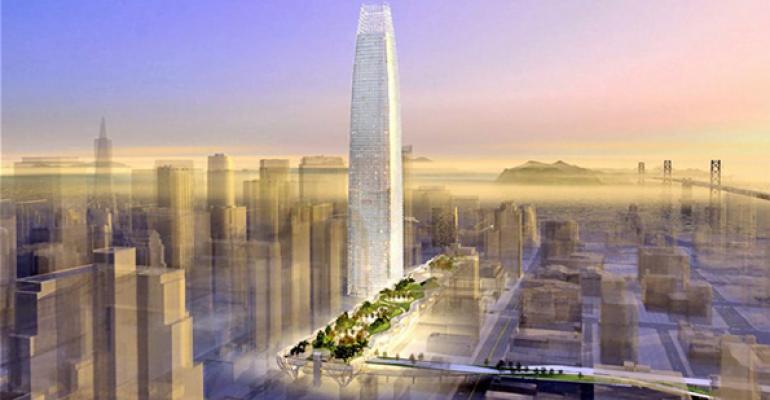The office industry has lagged behind the multifamily and industrial markets in recovering post-recession, partly because tenants can’t seem to make up their minds: Expand or contract? Suburbs or downtown? Telecommute or shared workstations?
However, if there’s one constant today in the major office markets, it’s that big block space couldn’t be more popular. High-profile downtown tenants liked the taste of one-upmanship of getting into the special new building before the recession, and today there’s still a waiting list of major tenants wanting to jump into top-line office space.
Thus, though jobs and the rest of the economy is slowly coming back to positive territory, there have been shovels in the ground in some cities for new construction, though the pace in some markets is faster than others.
Manhattan is ahead of the curve, with massive office developments being delivered in the next two-three years from the World Trade Center and Hudson Yard projects, but the demand is also there. Richard Persichetti, vice president of research at Cassidy Turley, says Manhattan is on pace to see 60 large-block office signings (more than 100,000 sq. ft.) this year, compared to an average of 40 per year since 2005. High rent deals are also up, as there were 34 deals signed for more than $100 per sq. ft. in 2012, and already by July that number is at 46 deals.
“We’re at about 14 percent availability now downtown, and I think by the end of 2014 when some of these new towers come online we’ll go to 16 percent, so there will be a negative effect,” Persichetti says. “I think New York will see new construction for the next five years, and then it will hold off for awhile. But absorption will continue regardless, we saw one million sq. ft. absorbed in the second quarter. Tenants are feeling better about the economy, they’re likely to make decisions instead of waiting as they did in 2010.”
Chicago is somewhat behind New York City on the construction efforts; the only office tower now under construction in the Windy City is the 900,000-sq.-ft. River Point project by a partnership of Hines and Ivanhoe Cambridge. Two law firms have signed on to take about half of the space at the 45-story tower. In early July, McDermott Will & Emery LLP agreed to take 225,000 sq. ft. at 45-story River Point, and DLA Piper announced in late July that it will also take an anchor position.
Jim Walsh, vice president for Hines in Chicago, says many of the large users of space in Chicago have been looking for efficiency, and believe they can pay a higher-per-sq.-ft. lease price because they’ll drop 40,000 sq. ft. to 50,000 sq. ft. in a move, he says. “There’s just limited choice for these anchors, those seeking 200,000 sq. ft. to 300,000 sq. ft., the demand has been strong,” he says. “There hasn’t been new office construction here since 2010, and we should be the first new tower open around the end of 2016.”
In the San Francisco/Silicon Valley area, you can’t throw a stick without hitting a technology firm looking for space. Millions of square feet are coming online in the area surrounding the new Transbay Terminal, with Boston Properties building the 60-story Transbay Transit Tower, and TMG Partners developing a 2 million-sq.-ft. mixed-use project across the street that will include about 1 million sq. ft. of office.
Michael Covarrubias, chairman and CEO of TMG, agrees that tenants are looking for more efficient space. “If they’re at 250 sq. ft. per person, they’re trying to see how they can get down to 175 sq. ft. or 150 sq. ft., they can then take less space, but move into a nicer or newer building for about what they’re paying now,” he says.
Covarrubias says though his firm has assembled the parcels at First and Mission streets, the San Francisco market may already be getting saturated. “We’re not sure if we’re going to build our project in this cycle or the next,” he says. “There’s just a lot of new product right now, with the Transit Tower and Tishman has theirs at Foundry Square. But there is a lot of tenants looking for big blocksin this market who have not had a lot of product choices in a long time.”

